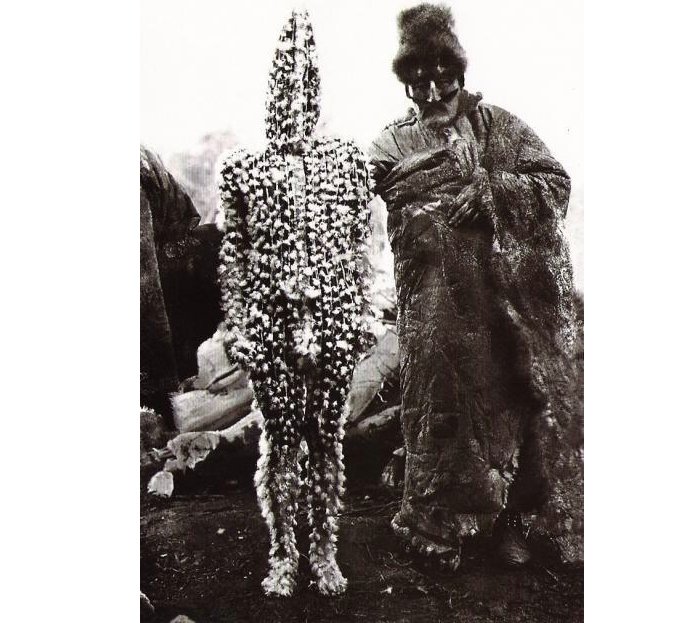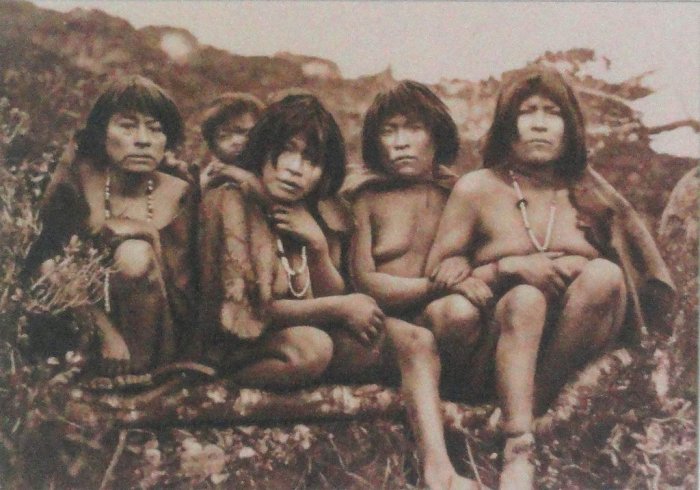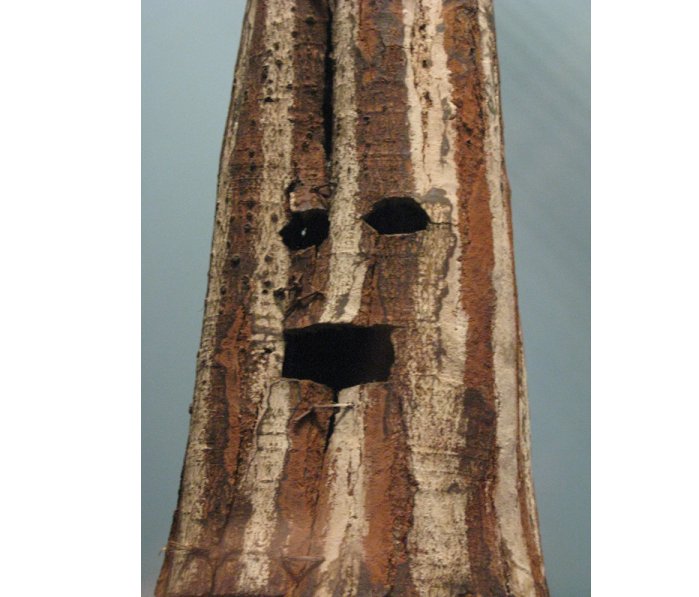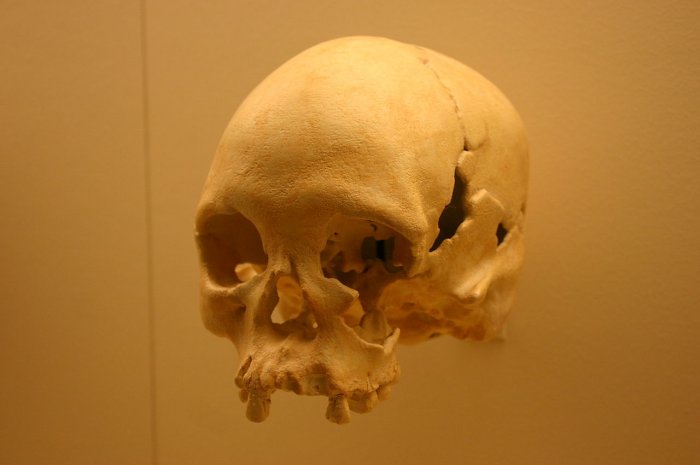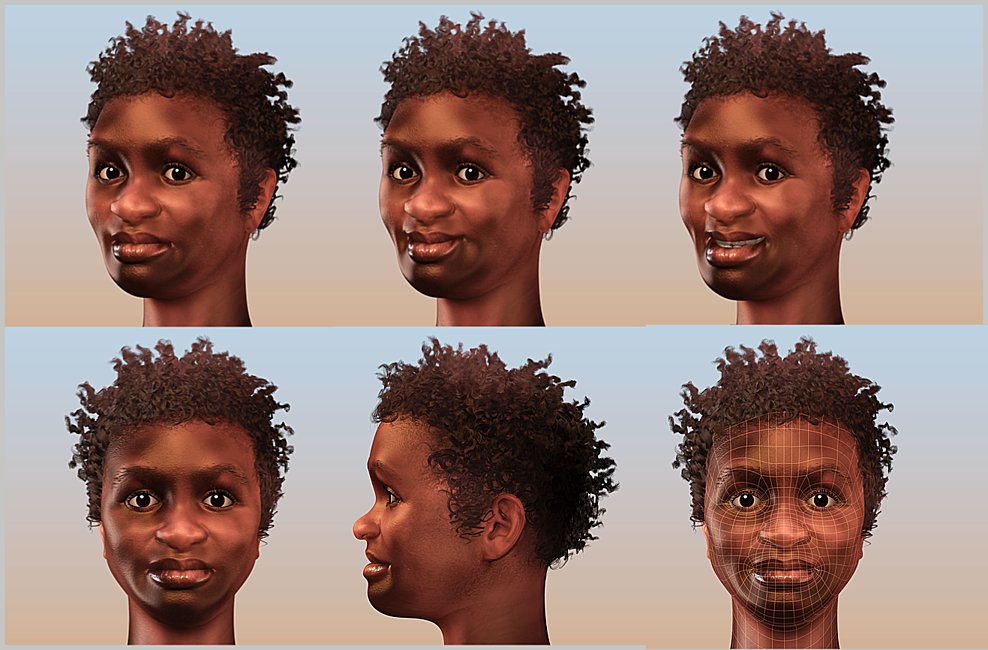Mystery Of The Yaghan People: The First True Discoverers Of America?
Ellen Lloyd - AncientPages.com - Many ancient mysteries surround the Yaghan people of Tierra del Fuego, an island near the southern tip of South America.
The Yaghan established many settlements within Tierra del Fuego and their activities in the region can be traced back several thousands of years, but it remains unclear where these people originally came from.
Credit: Anthropos Institute, Sankt Augustin, Germany
The Yaghan people are unusually cold-resistant and possess a body temperature a full degree higher than other people. Equally intriguing are their remarkable ancient paintings, customs, and traditions. A controversial theory suggests the Yaghans’ first ancestors may have been Australian Aborigines who were the true first discoverers of America.
The Yaghan People And Their Unusual Adaptation To The Cold
The Yaghan were traditionally nomads who were hunter-gatherers. They traveled by canoes between islands to collect food. Due to their home on these southern islands, they are often referred to as the “southernmost people in the world.”
They lived in dome-shaped buildings heated by fire, and prior to European colonization, they wore no clothing and often slept outside despite the bitter cold of their environment.
Spanish explorers came upon the area around Tierra del Fuego in the early sixteenth century. Still, it was not until the 19th century that Europeans started to be interested in the zone and its people. The Yahgan were estimated to number 3,000 persons in the mid-19th century when Europeans started colonizing the area.
Yaghan people, 1883 - Image credit: Wikipedia
When Europeans first encountered the Yaghan people, they were amazed how these indigenous peoples of the Southern Cone could adapt to the cold.
Although it rained all the time, and temperatures were often in the 30's and 40's, the Yaghan people seemed completely comfortable with virtually no clothes and often slept in the open and swam in the ocean.
Supposedly, the Yaghan possess a body temperature a full degree higher than other people. This seems plausible given their seemingly superhuman resistance to cold, but the source of the claim is unknown, and it may be impossible to verify, for there is only a single pure-blooded Yaghan left alive today, "Abuela" Cristina Calderón who lives in Chilean territory. She is the last native speaker of the Yahgan language.
The Yaghan People And Their Devastating Contact With The Europeans
The Yaghan population was devastated by European diseases in the 19th century.
Ancient ritual mask of the Yaghan people.
The English established missions at Keppel Island in the Falklands, and Ushuaia on Tierra del Fuego, in an effort to teach the natives English, Christianity, and farming. The Yahgan suffered disruption of their habitat in the late 19th century when waves of immigrants came to the area for the gold rush and a boom in sheep farming. They did not understand the British concept of property and were hunted down by ranchers' militias for the offense of "poaching" sheep in their former territories. As of 2002, only 1,685 people of Yaghan ancestry remain in Chile.
Fossilized Skull Of Luzia - The Oldest Human Remains Ever Recovered In The Western Hemisphere
In 1999, Brazilian anthropologist Walter Neves and his science team discovered an ancient skull that challenged our modern understanding of migration to America.
The fossilized cranium of a young woman, nicknamed Luzia, found in the state of Minas Gerais called Lapa Vermelha was identified by Brazilian scientists as the oldest human remains ever recovered in the Western Hemisphere.
Luzia was about twenty years when she died, and she appears to have perished in an accident or perhaps even from an animal attack.
A reconstruction of her cranium undertaken in Britain this year indicates that her features appear to be Negroid rather than Mongoloid, suggesting that the Western Hemisphere may have initially been settled not only earlier than thought but by a people distinct from the ancestors of today's North and South American Indians.
A cast of Luzia's skull at the National Museum of Natural History.
''We can no longer say that the first colonizers of the Americas came from the north of Asia, as previous models have proposed,'' Dr. Walter Neves said.
''This skeleton is nearly 2,000 years older than any skeleton ever found in the Americas, and it does not look like those of Amerindians or North Asians.''
If the date is confirmed, the find could transform thinking about the people of the Americas.
Until Luzia, named as a playful homage to Lucy, the 3.2-million-year-old human ancestor found in Africa, the oldest known human remains recovered in the Western Hemisphere were those of a woman found in Buhl, Idaho, and repatriated to the Shoshone tribe in 1991. Radiocarbon dating tests have established the age of that skeleton as a bit more than 10,000 years old.
Dr. Neves suggests that Luzia belonged to a nomadic people who began arriving in the New World as early as 15,000 years ago.
Computerized reconstruction of Luzia's face. Skin color and hair features are suppositions. Credit: Cicero Moraes - www.ciceromoraes.com.br
The earliest known human skulls in South America, from 12,000 to 6,000 years old, are similar to those of indigenous Australians. They do not resemble those of the Clovis people, who crossed into North America from Siberia via the Bering Land Bridge around 15,000 years ago, and are generally considered the ancestors of all indigenous New World peoples.
Circumstantial evidence that Australians may have reached South America first also includes bones painted with red ochre as the Aboriginal Lake Mungo remains and the rock shelters of Pedra Furada in Brazil, which contain stone artifacts dated as old as 60,000 years, roughly the same age as the first signs of human activity in Australia.
Among living South American Natives, the Yaghan and other peoples of Tierra del Fuego are the only ones to retain such Australoid features. DNA studies support Neves’ theory, showing a mixture of Siberian and Australian genetic markers among Fuegians.
This means that if Dr. Neve’s theory is correct, more than 12,000 years ago, Australoid peoples either migrated through northern Asia and North America without leaving a trace, crossed the Pacific Ocean directly by boat, or island-hopped from Australia to Antarctica and then to South America.
Who discovered America has been debated for a very long time. Over the years, it has been suggested that the ancient Chinese, the Vikings, the Arabs, The Africans, the Italians, the British, and the Polynesians, among others, were the first to set foot on the shores. Whoever came first in ancient times remains unknown, but it was not Christopher Columbus.
Astonishing Masks And Bodypainting Of The Yaghan
The masks and bodypainting of the Yaghan (sometimes also called Yamana) people are truly astonishing and very unusual and closely linked to their mythologies and ancient rituals.
Credit: Anthropos Institute, Sankt Augustin, Germany
The masked figures appeared in initiation rites and were used to impersonate powerful spirits. Worn by already initiated members of the men's lodge, they would appear to the younger male initiates as manifestations of spirits they were raised to be fearful of, and the effect would be truly startling. The initiates would have to fight the spirits and unmask them to learn the truth, and then they would be told the story of world creation and the origin of the masks:
In the time of the Ancestors, all things walked the earth as people. The Sun, the Moon, and the Mountains were all people.
Women ruled, and to maintain their rule, they created a secret lodge. Led by Kra, the Moon woman, they would wear bark masks and bodypaint themselves and they would appear to the men so disguised, saying they were the powerful spirits who stayed with the women in their lodge. They would frighten the men and order them to stay away. Kran, the Sun man, discovered the deception. He and the men chased, beat, and killed the women. Then they created the men's lodge and their own spirit masks and disguises.
Our member section offers a wealth of informative and insightful articles similar to this one. Upgrading to a premium membership gives you ad-free access to our entire collection of articles, allowing you to explore and enjoy our content without interruptions.
Updated on July 25, 2023
Written by Ellen Lloyd – AncientPages.com
Copyright © AncientPages.com All rights reserved. This material may not be published, broadcast, rewritten or redistributed in whole or part without the express written permission of AncientPages.com
Expand for referencesMore From Ancient Pages
-
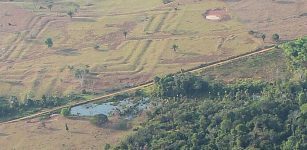 Millennial Pre-Colonial Cultural Influence Is Evident In The Amazon Forest
Archaeology | Jun 28, 2020
Millennial Pre-Colonial Cultural Influence Is Evident In The Amazon Forest
Archaeology | Jun 28, 2020 -
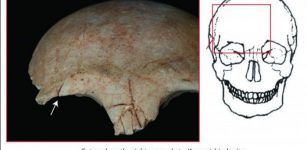 Population Pressure And Prehistoric Violence In The Yayoi Period Of Japan
Archaeology | Aug 30, 2021
Population Pressure And Prehistoric Violence In The Yayoi Period Of Japan
Archaeology | Aug 30, 2021 -
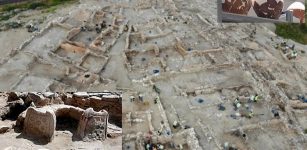 Anatolia’s Seyitömer Mound Was Inhabited In Bronze Age, Achaemenid, Hellenistic, And Roman Times
Archaeology | Aug 17, 2020
Anatolia’s Seyitömer Mound Was Inhabited In Bronze Age, Achaemenid, Hellenistic, And Roman Times
Archaeology | Aug 17, 2020 -
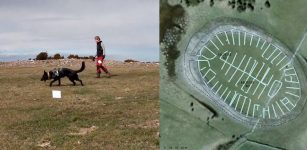 Fabel: World’s First Archaeology Dog Helps To Unravel The Mystery Of Sandby Borg
Archaeology | May 10, 2016
Fabel: World’s First Archaeology Dog Helps To Unravel The Mystery Of Sandby Borg
Archaeology | May 10, 2016 -
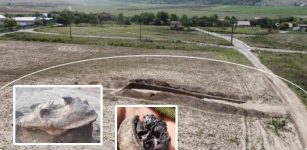 Archaeologists Make An Unusual Find In A 2,000-Year-Old Romanian Burial Mound
Archaeology | Jul 12, 2023
Archaeologists Make An Unusual Find In A 2,000-Year-Old Romanian Burial Mound
Archaeology | Jul 12, 2023 -
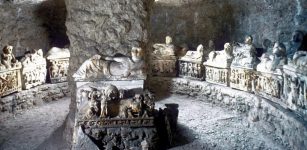 Image Of The Day: The Inghirami Tomb At Volterra, Italy
Image Of The Day | Sep 9, 2015
Image Of The Day: The Inghirami Tomb At Volterra, Italy
Image Of The Day | Sep 9, 2015 -
 Hidden 15th-Century Text On Medieval Manuscripts – Discovered By Students
News | Nov 23, 2020
Hidden 15th-Century Text On Medieval Manuscripts – Discovered By Students
News | Nov 23, 2020 -
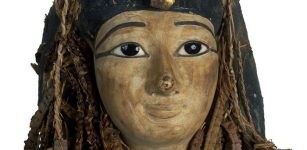 Mummy Of Pharaoh Amenhotep I Digitally Unwrapped For The First Time In 3,000 Years
Archaeology | Dec 30, 2021
Mummy Of Pharaoh Amenhotep I Digitally Unwrapped For The First Time In 3,000 Years
Archaeology | Dec 30, 2021 -
 Arachne – Spider Woman Who Challenged Goddess Athena And Was Punished
Featured Stories | Dec 5, 2018
Arachne – Spider Woman Who Challenged Goddess Athena And Was Punished
Featured Stories | Dec 5, 2018 -
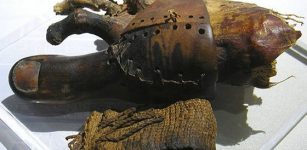 Prehistoric Evidence Of Sophisticated Prosthetics In Ancient Egypt – Artificial Toes Helped Egyptians Walk
Archaeology | Feb 20, 2014
Prehistoric Evidence Of Sophisticated Prosthetics In Ancient Egypt – Artificial Toes Helped Egyptians Walk
Archaeology | Feb 20, 2014 -
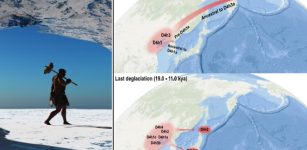 DNA Evidence Ice Age Humans Migrated From China To The Americas And Japan
DNA | May 9, 2023
DNA Evidence Ice Age Humans Migrated From China To The Americas And Japan
DNA | May 9, 2023 -
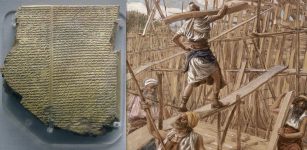 Hidden Double Message Discovered On Ancient Clay Tablet Gives A Disturbing Account Of The Great Flood
Archaeology | Dec 5, 2019
Hidden Double Message Discovered On Ancient Clay Tablet Gives A Disturbing Account Of The Great Flood
Archaeology | Dec 5, 2019 -
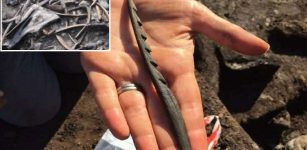 Archaeologists Shed Light On The Lives Of Stone Age Hunter-Gatherers In Britain
Archaeology | Jan 20, 2023
Archaeologists Shed Light On The Lives Of Stone Age Hunter-Gatherers In Britain
Archaeology | Jan 20, 2023 -
 What Was Legio Martia And Why Were The Roman Soldiers Called The Martians?
Ancient History Facts | Jan 5, 2018
What Was Legio Martia And Why Were The Roman Soldiers Called The Martians?
Ancient History Facts | Jan 5, 2018 -
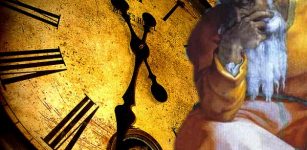 Did Ancient Civilizations Possess Knowledge Of Time Travel?
Ancient Technology | Sep 17, 2018
Did Ancient Civilizations Possess Knowledge Of Time Travel?
Ancient Technology | Sep 17, 2018 -
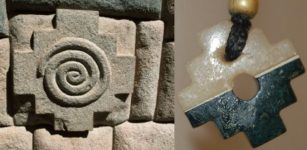 Mysterious Chakana – Sacred Inca Cross And Its Connection To The Southern Cross Constellation
Ancient Symbols | Sep 15, 2018
Mysterious Chakana – Sacred Inca Cross And Its Connection To The Southern Cross Constellation
Ancient Symbols | Sep 15, 2018 -
 Huge, Ancient Underground City Filled With Artifacts Discovered In Mardin, Turkey
Archaeology | Apr 20, 2022
Huge, Ancient Underground City Filled With Artifacts Discovered In Mardin, Turkey
Archaeology | Apr 20, 2022 -
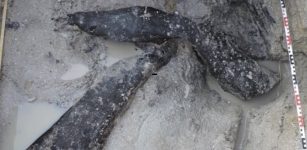 Discovery Of Half-Million-Year-Old Wooden Structure Shows We’re Wrong To Underestimate Our Ancient Relatives
Featured Stories | Oct 10, 2023
Discovery Of Half-Million-Year-Old Wooden Structure Shows We’re Wrong To Underestimate Our Ancient Relatives
Featured Stories | Oct 10, 2023 -
 Has The Body Of Legendary Pirate Black Sam Finally Been Discovered Off The Coast Of Massachusetts?
Archaeology | Feb 17, 2021
Has The Body Of Legendary Pirate Black Sam Finally Been Discovered Off The Coast Of Massachusetts?
Archaeology | Feb 17, 2021 -
 Mysterious Books From The Unknown And ‘Impossible’ Coincidences
Featured Stories | Dec 30, 2020
Mysterious Books From The Unknown And ‘Impossible’ Coincidences
Featured Stories | Dec 30, 2020

